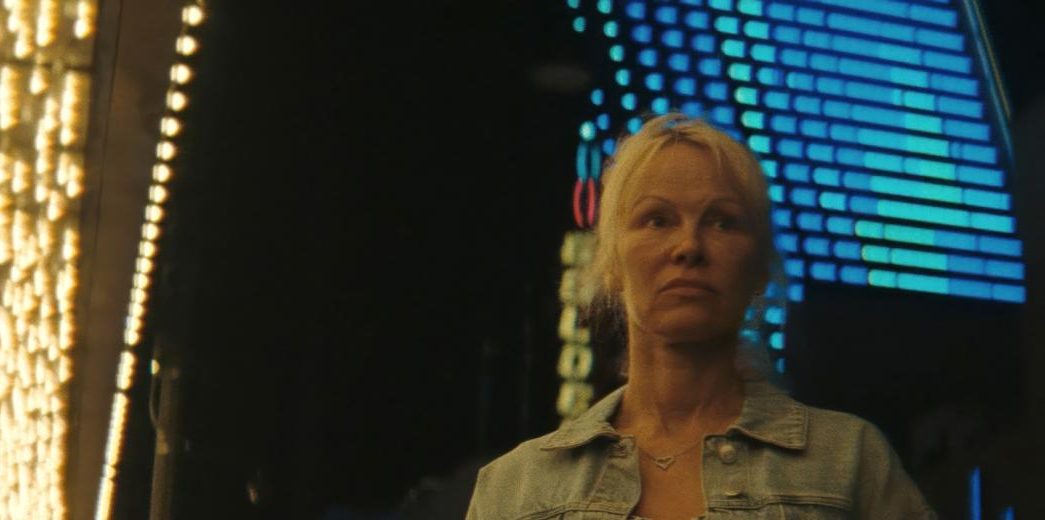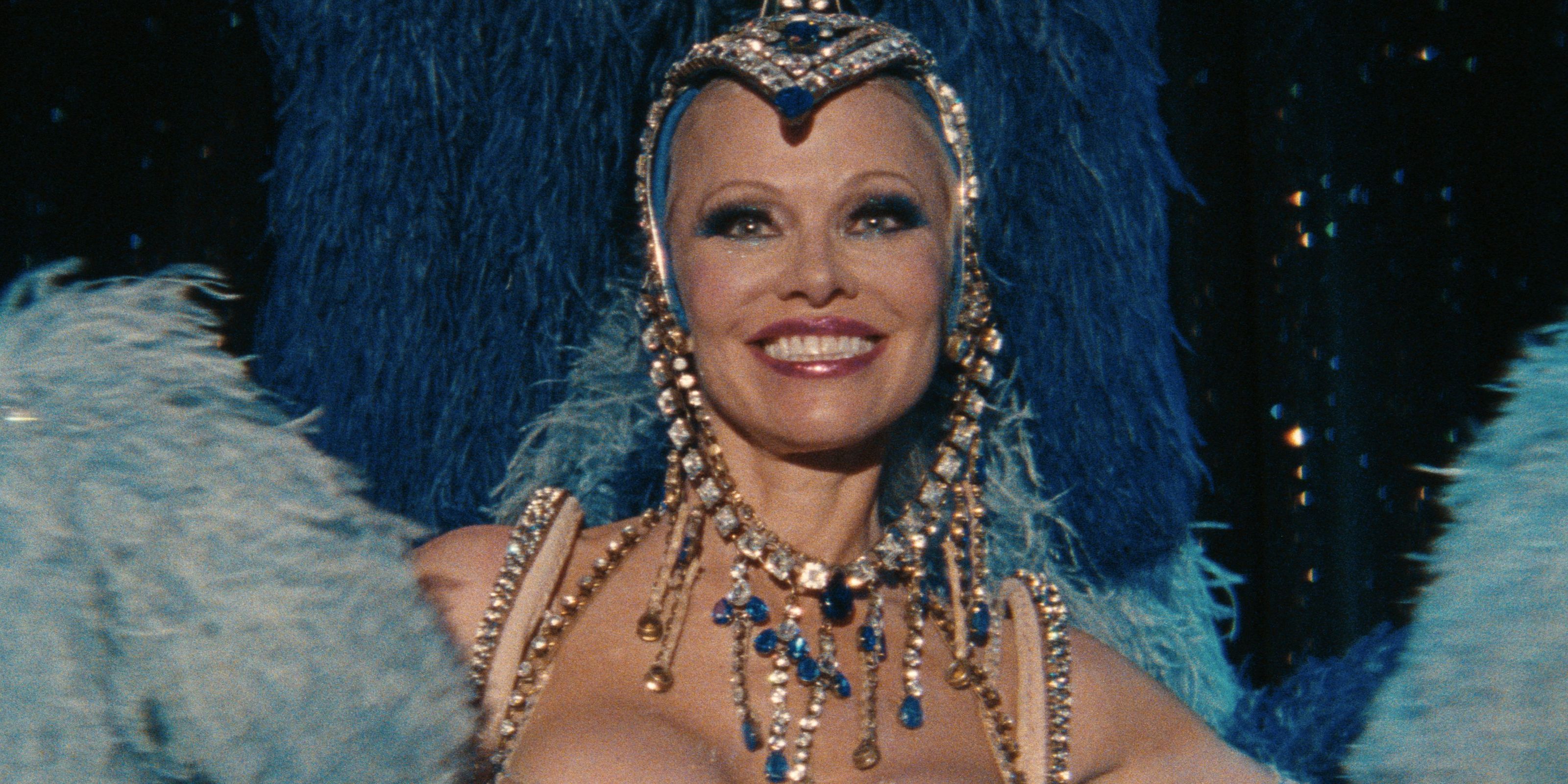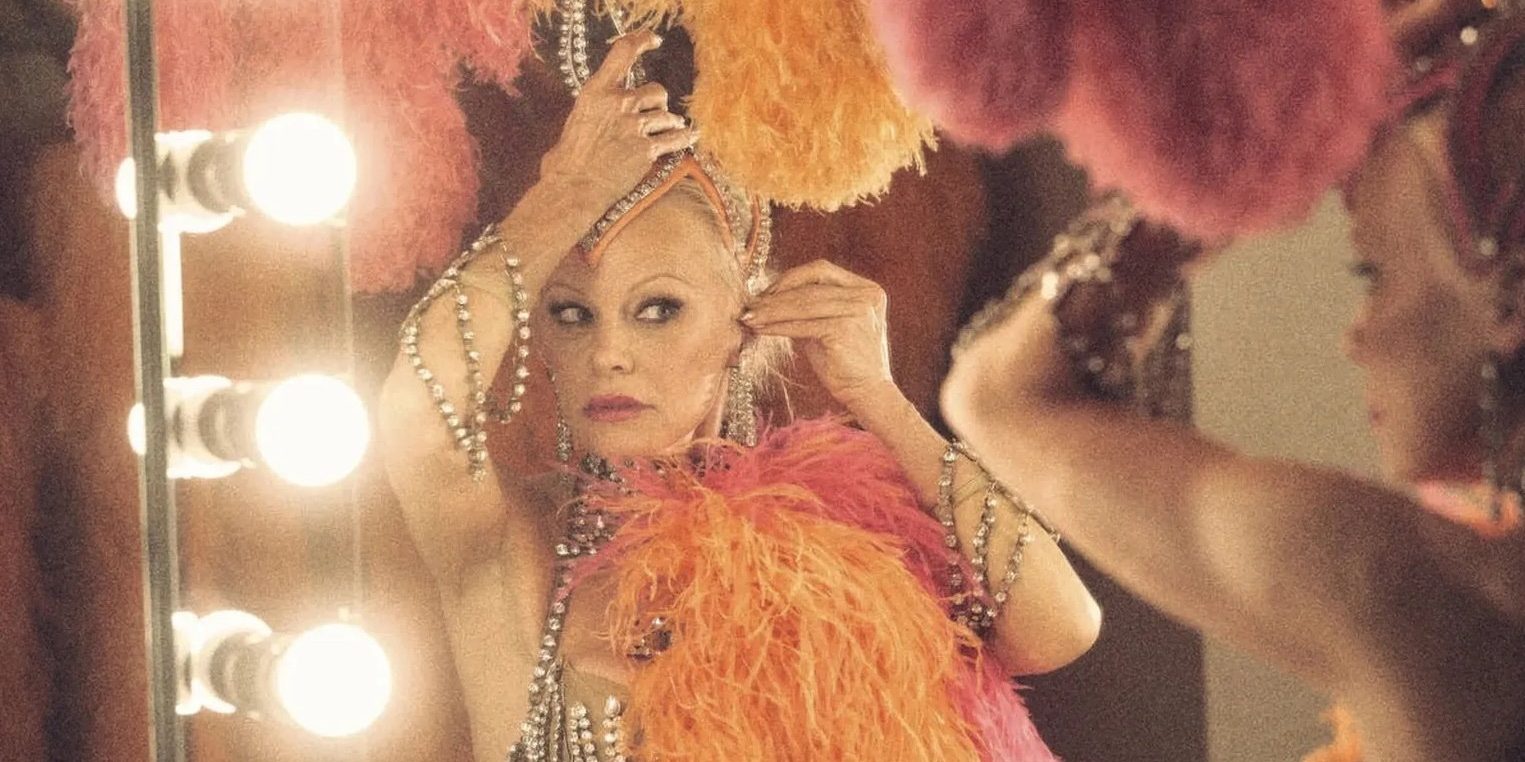‘The Last Showgirl’ follows the exploits of a 57-year-old showgirl named Shelly Gardner, whose life is upended when news arrives about the cancellation of her longstanding show ‘Le Razzle Dazzle.’ Subsequently, she must figure out her future in a rapidly modernizing world with different tastes. Although skeptical about the new burlesque shows taking over the town, Shelly watches her colleagues slowly shift towards a different approach, which clashes with her ideals. Things get further complicated when her estranged daughter decides to give her a visit, opening up old wounds about her past choices. Directed by Gia Coppola, the drama film delves into motherhood, aging in the entertainment industry, identity, and nostalgia, among many others.
The Last Showgirl Touches Upon the Realities of Aging as an Artist
‘The Last Showgirl’ is a fictional story penned by Kate Gersten, based on her unproduced play ‘Body of Work.’ The movie dives into the finite nature of being a star within the entertainment industry and the need for radical reinvention as time passes by. The story highlights the unattainable standards put on women as they age in an artistic field and the brutal nature of the business. When writing the original play, Gersten was inspired by her visits to the ‘Jubilee!’ show, which was canceled in 2016. She found the genesis of her idea when watching the live show and tried to come up with an adequate story to capture in a play. Coppola revealed that Gersten’s tight narrative structure in the play allowed for a more intimate film that explored its subject at a deeper level.

The Las Vegas backdrop also adds to the real-life references built into the movie. According to Coppola, the city is a “metaphor for the Americana.” She saw the image of a showgirl dancing on a stage as a callback to a different era, which has become seeded in Las Vegan iconography but faded from modern existence. In some ways, this reflects Shelly’s plight in the film, which is the main focus throughout. As we delve into her issues behind the stage, it becomes evident that the problems are not just her own but also rooted on a societal level. It returns to the initial notion of aging and becoming obsolete as a figure within a creative field. Shelly finds herself fading away from existence, similar to how ‘Le Razzle Dazzle’ is fading as a show.
There is also an element of social commentary and a generational gap that seeps into the story. While Shelly’s younger colleagues are seeking to get with the times, she feels helpless and stuck in her old ways. The protagonist feels unable to pivot from one foot to another as the circumstances of her life trap her. She can neither slip into younger shoes because of the intense scrutiny over age nor can she continue her own ways because they are slowly being whittled down to nothing. Still, the film showcases her desire to remain relevant, both in a professional and personal sense. While the events and characters described in the movie may be fictional, its examination of an individual’s fears and anxieties are more often than not spot on and tragic to witness on screen.
Shelly Gardner is a Fictional Showgirl With No Ties to Reality
Shelly Gardner is the fictional protagonist of ‘The Last Showgirl.’ She was created by Kate Gersten, who, as mentioned before, based some of the story and characters on the showgirls from the real-life show ‘Jubilee!’ Thus, Shelly may be a composite of fictional and real-life material. In the film, she is shown as the middle-aged matriarch of her revue show ‘Le Razzle Dazzle.’ However, when news arrives that the show is about to be shut down, she goes through a massive internal crisis over two weeks. Subsequently, she finds herself tested on all fronts: professionally, mentally, and emotionally. Although fictional in origin, the character is meant to represent the last vestiges of an old dying art form that has become obsolete. This is all compounded by her age, which becomes a significant factor in her inability to land other roles as a dancer.

In some way, Shelly represents the divide within contemporary society when it comes to preferring new things over old. She constantly rails back against the notion that the latest shows are superior compared to ‘Le Razzle Dazzle.’ However, a lot of the tension is rooted in her increasing obscurity within the industry. It all comes to a head when ‘Le Razzle Dazzle’ is canceled, confirming all her fears. In real life, there is a constant war between analog and digital, nostalgia and cynicism, past and present, at every turn. In the movie, this manifests in Shelly’s clashes with her younger workers over their interest in the neo-burlesque shows. Meanwhile, it also becomes evident in her divide with her daughter, Hannah. Thus, her character is tangible and rooted in reality from a variety of contextual angles. Despite all that, she remains fictional and drawn from the writer’s imagination.
Read More: Best Dance Movies and Shows on Netflix


You must be logged in to post a comment.